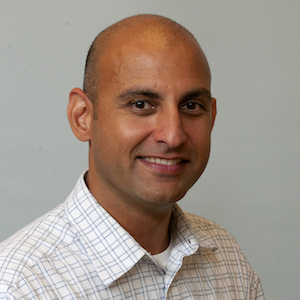News & Events
Imran Rizvi, Ph.D.
Posted on September 28, 2018

When
Date - September 28, 2018
1:00 pm - 2:00 pm
What
Dr. Imran Rizvi
Assistant Professor
Joint Department of Biomedical Engineering
UNC Chapel Hill + NC State University
Talk Title: Photochemical strategies to enhance drug delivery and improve treatment response in cancer
Abstract:
Physiological barriers to drug delivery and therapy-induced molecular selection pressures preclude durable improvements in survival for many cancer patients. It is increasingly evident that the most effective treatments will involve cooperative regimens that target multiple non-overlapping pathways, while minimizing systemic toxicities. Photodynamic therapy (PDT) can improve the therapeutic index of traditional and emerging treatments by exploiting photochemically-triggered cytotoxic mechanisms that damage sub-cellular organelles, prime tumor cells, disrupt stromal compartments, and enhance drug delivery. This presentation will describe key principles that guide the development of PDT-based therapeutic regimens. A specific focus is on enhancing the efficacy of camptothecin analogues and platinum-based chemotherapies, which are commonly used to manage cancers, but suffer from significant toxicities, poor drug penetration, and resistance. PDT overcomes these barriers to efficacy, due to its distinct cytotoxic mechanisms and non-overlapping toxicities. Capturing these attributes in rationally-designed combinations leads to synergistic tumor reduction in 3D models, and durable tumor control in orthotopic xenograft mouse models for ovarian and pancreatic cancer. The mechanistic basis of these improved outcomes will be presented: (1) Harnessing photo-initiated sub-cellular cytotoxic mechanisms (e.g. damage to mitochondria/ER and degradation of bcl-2) to prime tumor cells for subsequent mechanistically-distinct chemotherapeutic insult, thereby lowering the threshold to tumor destruction; (2) Stromal and vasculature disruption to improve drug delivery, significantly enhancing the penetration of chemotherapeutics and increasing intratumoral accumulation by >10-fold; and (3) Mitigation of chemotherapy-induced enrichment of cellular stemness markers (e.g. CD44, CXCR4) to provide significant and sustained reductions in local and distant tumor burden, and prolonged improvements in survival. Results will be discussed in the context of opportunities for collaboration involving imaging and therapeutic applications of light, bioengineered 3D models and animal models for cancer, and targeted drug delivery for inhibition of molecular survival pathways in tumors.





